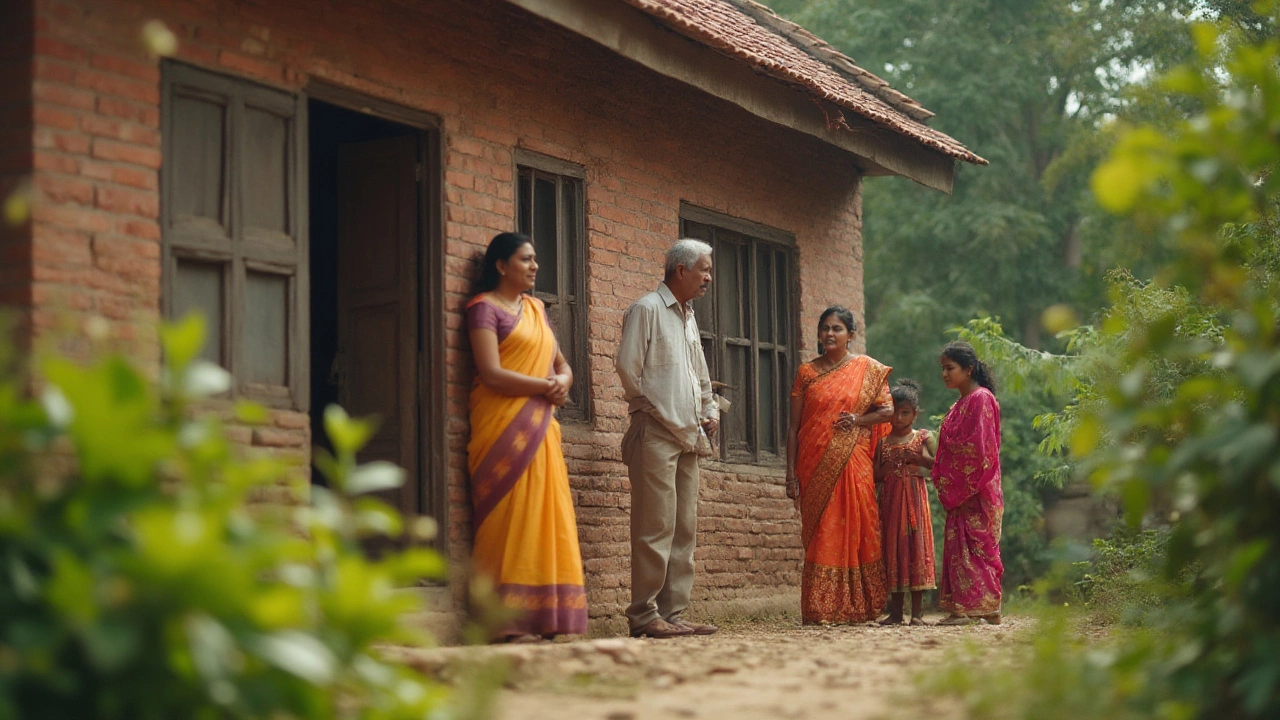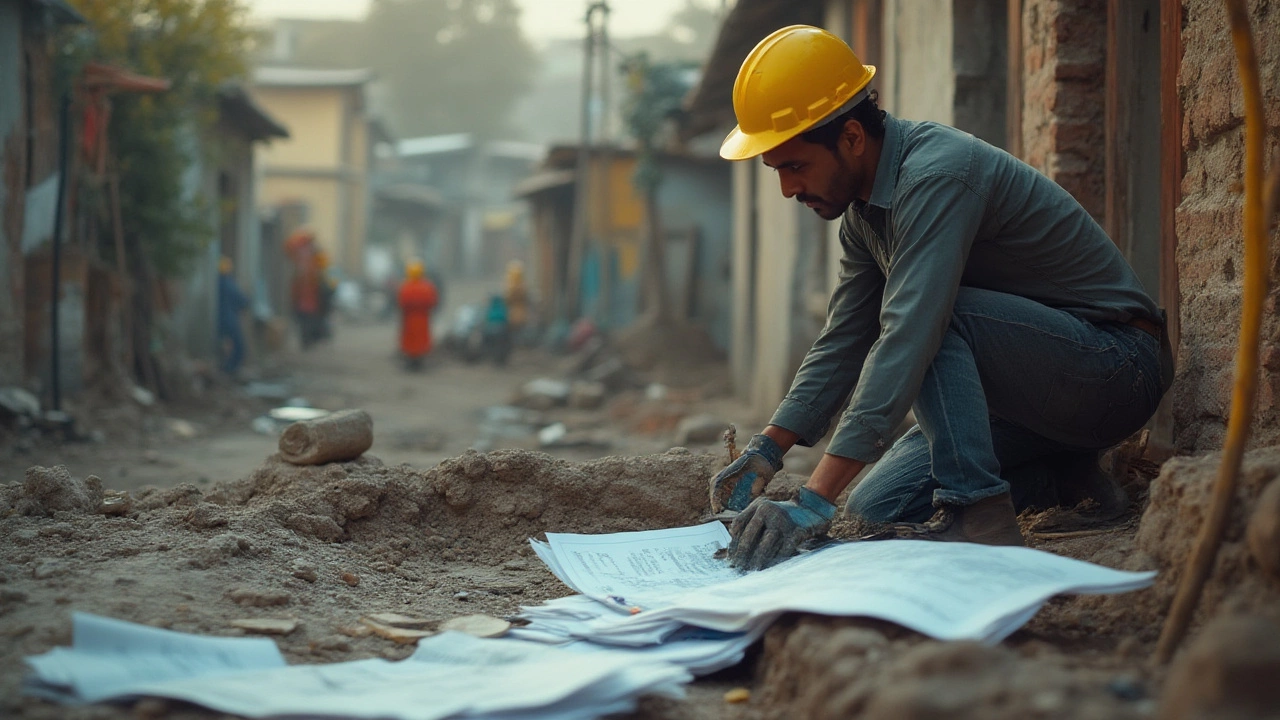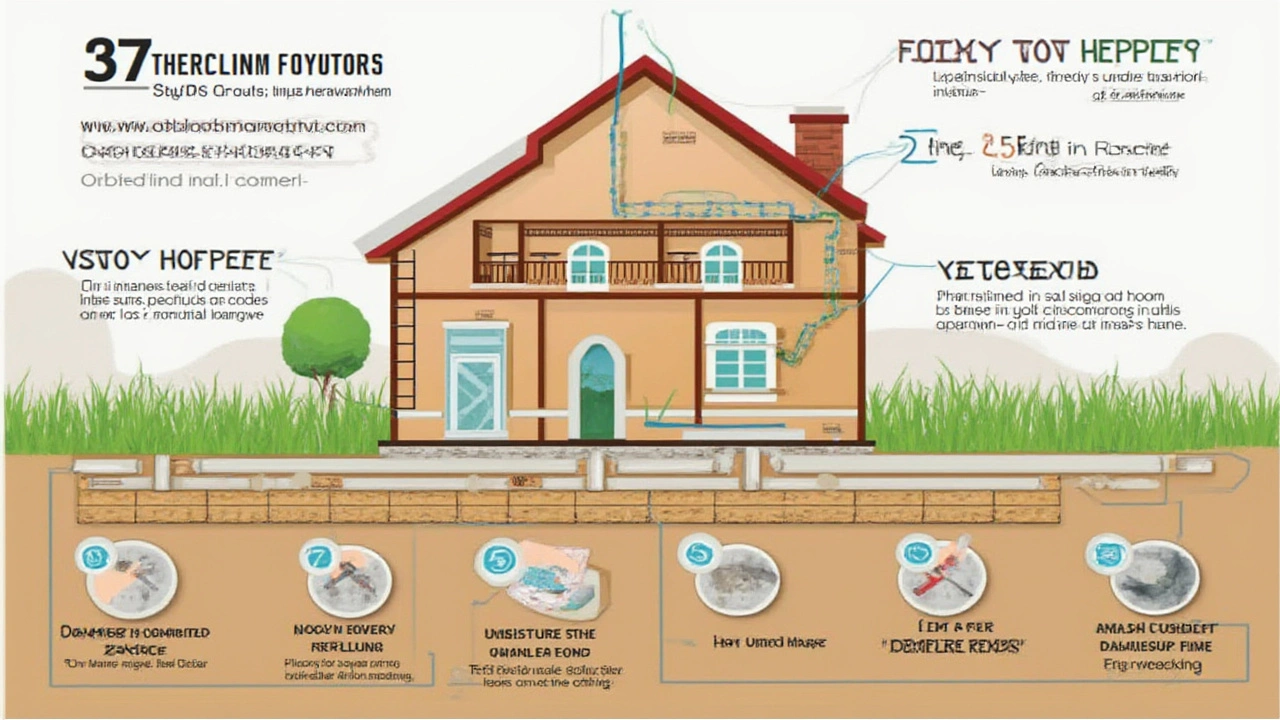How to Deal with Foundation Problems in Your House: Expert Tips for Homeowners

Every year, thousands of homeowners go to sleep, blissfully unaware that their biggest investment might be shifting—literally—beneath their feet. Foundation problems in a house don’t just creep up overnight, but when you notice a stair-step crack across your basement wall or a door that won’t close right, that sinking feeling hits hard. My own neighbor only found out about his foundation mess when he noticed his kitchen tile starting to pop up like some budget special effects. Messy, expensive, stressful—it’s enough to keep anyone up at night. Truth is, ignoring foundation issues can lead to repairs that eat your vacation fund whole. But if you act early, you might just dodge the worst of it.
Why Foundation Problems Happen and What’s Really at Stake
So, why do house foundations go rogue? In most US regions, it comes down to soil movement, water, and time. Clay soil swells and shrinks like a living thing. Then there’s improper drainage, which can flood the area around your base and push against your foundation with surprising force. Throw in tree roots and even earthquakes—not to mention poor construction from the start—and that’s a recipe for trouble. The American Society of Civil Engineers estimates that over 25% of US homes will face structural distress sometime during their lives, mostly foundation-related. It’s not just bad luck or old age that causes trouble—it’s usually a combo of local soil, moisture, or missed warnings during a build or remodel.
If you’re thinking, “What’s the big deal if my house has a few cracks?”—well, it’s not just about looks. Small cracks can lead to water leaks, mold, pest invasions, and even major structural shifts. The National Association of Home Builders has found that unresolved foundation trouble can reduce your property value by up to 15%. Insurance doesn’t always foot the bill, either—most homeowner policies exclude foundation repairs if the cause is “normal” soil movement, settling, or neglect. Home inspectors say shifting or settling foundation problems lead the list of deal-breakers when a home gets put up for sale. That means this isn’t just a project for “someday;” it’s a safety, comfort, and money issue you need to tackle head-on.
Here’s a fast look at the most common causes and warning signs:
| Cause | Common Sign |
|---|---|
| Poor Drainage | Pooling water near the foundation |
| Expansive Clay Soil | Large cracks forming after rain/drought cycles |
| Poor Grading | Water slopes toward house |
| Trees/Roots | Foundation upheaval or shifting |
| Plumbing Leaks | Mystery dampness or heaving floor slabs |
So when it comes to your home’s base, burying your head in the sand is the fastest way to see things get much worse.
Spotting Foundation Problems Before They Wreck Your Home
Here’s the thing: your house probably isn’t just randomly cracking for no reason. Most people spot the first clues by accident—a crack in the drywall, maybe a sticky window, or suddenly finding water where it shouldn’t be. The sooner you notice, the less cash you’ll hemorrhage fixing it. I’m a big believer in trust-but-verify. That means doing a little detective work: take a slow lap around your house every season and watch for warning signs. If you see anything that feels off, jot it down or take a photo. Save those, so six months later you can see if things are getting worse.
- Look for cracks: Horizontal cracks in foundation walls or basement floors deserve extra attention. Vertical cracks are more common (especially in poured concrete), but a crack wider than a pencil needs a pro’s opinion.
- Check doors and windows: If they suddenly won’t open or close right and aren’t due to humidity, it might be because the house frame is shifting on a tired foundation.
- Uneven floors: Dropped marbles suddenly rolling to one corner? Sloped floors signal possible foundation sinking.
- Bulging walls or gaps: If sheetrock near the ceiling is pulling away, or you find a bulge in a basement wall, it might be under pressure from soggy soil (hydrostatic pressure).
- Exterior gaps: Walk around outside—gaps between the brick, siding, or steps and the house are a red flag.
- Water, mold, or musty smells: Not just annoying; it’s a sign water is getting in where it shouldn’t, maybe through foundation cracks.
Tip from hard experience: sometimes minor cracks really are just cosmetic, especially in older houses that have settled. But a pattern of cracks, especially with other warning signs, means it’s time to call in a specialist. If your house is less than 10 years old and you start seeing foundation trouble, that’s even scarier—this could mean severe construction or soil issues.
Want to draw the line between stress and structure? Mark cracks with a pencil on the drywall or foundation, add the date, and recheck each month. If the cracks don’t creep wider, you might be safe to leave it alone. If they grow, you’ve got a moving target—and that’s when to call the experts. Don’t wait for a rainy week to find out your “little” crack is suddenly a water slide.

First Steps: What To Do If You Suspect Foundation Damage
If you see clear signs your house’s skeleton is struggling, take a breath—you’ve got options. Jumping straight to nightmare images of jacks, excavators, or wrecking balls isn’t necessary. Here’s how to tackle it with your sanity (and wallet) intact:
- Document everything: Take photos, note dates, and make a sketch of where you see issues.
- Stop water problems now: Redirect downspouts, clean your gutters, add extensions, and make sure soil slopes away from your house.
- Don’t patch major cracks yourself: Quick-fill kits from hardware stores are only for tiny, hairline cracks. Anything bigger is best left to a foundation expert for assessment.
- Check your plumbing: Sometimes, slow leaks or sewer line problems cause soil erosion and lead to foundation sinking. Watch for higher water bills or soggy patches in your yard.
- Call a foundation specialist or structural engineer: They can inspect, measure, and figure out if the problem is ongoing or just old house scars. Their reports are gold when negotiating repairs or insurance claims.
Cost estimates for repair swing wildly. According to 2024 HomeAdvisor surveys, most foundation repairs run between $4,500 to $15,000, but serious cases—especially where heavy-duty piers or full foundation replacement are needed—can hit $30,000 or more. The big variable? How soon you get help and whether water problems are ongoing. Fast fixes like crack epoxy injections can cost a few hundred bucks, but underpinning or slab jacking goes much higher.
Nina once insisted we triple-check the slope around our home after seeing a neighbor’s ridiculous repair bill. It was time well spent; rainwater can be persistent and sneaky, and a $70 gutter extension saved us from a $7,000 slab repair years later.
How Pros Fix Foundation Issues: Solutions and What You Can Expect
So, what do foundation repair experts actually do when they come out? Honestly, it depends on what they find. Sometimes it’s as simple as sealing cracks and improving drainage. Other times, it’s a big project with braces, sump pumps, or even hydraulic piers shoved deep into the earth. Here’s what’s on the menu of common fixes:
- Crack repair: Epoxy or polyurethane injections seal out water and stabilize smaller cracks. Fast, but not for major shifts.
- Underpinning: Think of this like giving your house crutches. Steel or concrete piers go down to stable soil, and hydraulic jacks lift the foundation back in place. This is the gold standard for big fixes.
- Slab jacking (mudjacking): A mortar slurry is pumped under sunken concrete slabs to raise them. Works for driveways, patios, and some slabs.
- Wall anchors or braces: If basement walls are bowing, steel braces or anchors are driven into the ground outside to pull the wall straight and keep it stable.
- Drainage and grading: This is always on the to-do list. Grading soil, adding French drains, or installing sump pumps to reroute water means your repairs last.
Hiring a reputable company is half the battle. A solid repair specialist will give you a written estimate, explain the underlying cause, and detail what’s urgent now (and what can wait). Don’t fall for scare tactics—always compare more than one quote. Repairs might take a few days to a couple weeks, depending on how ugly the damage is. In rare cases, if foundation trouble is tied to ongoing drainage issues the pros need to fix that first, or risk the damage coming right back.
Here’s a quick breakdown of average foundation repair costs by method, based on recent industry surveys:
| Repair Method | Typical Cost Range |
|---|---|
| Crack Repair | $500 - $2,500 |
| Slab Jacking | $2,500 - $6,000 |
| Pier Installation (Underpinning) | $10,000 - $25,000 |
| Wall Anchors/Braces | $3,000 - $15,000 |
| Extensive Drainage Corrections | $1,000 - $10,000 |
Pep talk: the right repair adds decades of life and value to your house. For buyers, foundation stabilization often reassures them they won’t be inheriting your problem. Good repair records are worth their weight in gold when selling.

Preventing Future Foundation Problems and Keeping Your Home Safe
Hold up, don’t just fix and forget. About 60% of homes built on problematic soil will face foundation trouble again if drainage and water issues aren’t solved. Luckily, there’s a checklist to help make your home almost foundation-proof (or as close as possible without a crystal ball):
- Keep water away: Make downspouts and gutters a religion. Water should always race away from your house, not pool around it.
- Test your grading: Soil should slope away from the foundation at least 6 inches for every ten feet. Grab a shovel annually and add fresh dirt if needed.
- Avoid thirsty trees: Large trees pull moisture from under your slab. Any tree closer than 15 feet could become trouble—choose shrubs or smaller species when planting near your house.
- Fix plumbing leaks now: Under-the-slab leaks are serious. Get them fixed fast to prevent erosion or heaving.
- Seal cracks regularly: Once repairs are done, keep an eye on old trouble spots and seal any new hairline cracks just to be safe.
- Annual inspections: Hire a pro to look at your foundation every couple years, especially if you live in a high-risk zone. If you’re selling, a clean report helps remove buyer worries.
One easy hack is to run a garden hose around your house after heavy rain. If water pools next to your foundation, tackle that with a French drain or grading fix before anything else. Even on a tight budget, a weekend with some dirt, a shovel, and a rented level can do wonders.
Looking out for future problems means obsessing just a little—at least until you know your home’s quirks. My wife, Nina, laughs now about my regular “foundation walks” after storms, but it’s far less hassle than facing a living room that’s suddenly sloping like a ski hill. There’s real satisfaction in knowing you’ve spotted a little problem before it becomes an epic headache.
Don’t fall for the myth that houses have to settle in ways that wreck your comfort or your bank account. With a bit of vigilance, smart upkeep, and calling the right help fast, you can keep your home strong, safe, and stable for the long haul.
Your house is rooting for you—just keep its foundation solid and give it the support (and gutter extensions) it deserves.
Write a comment